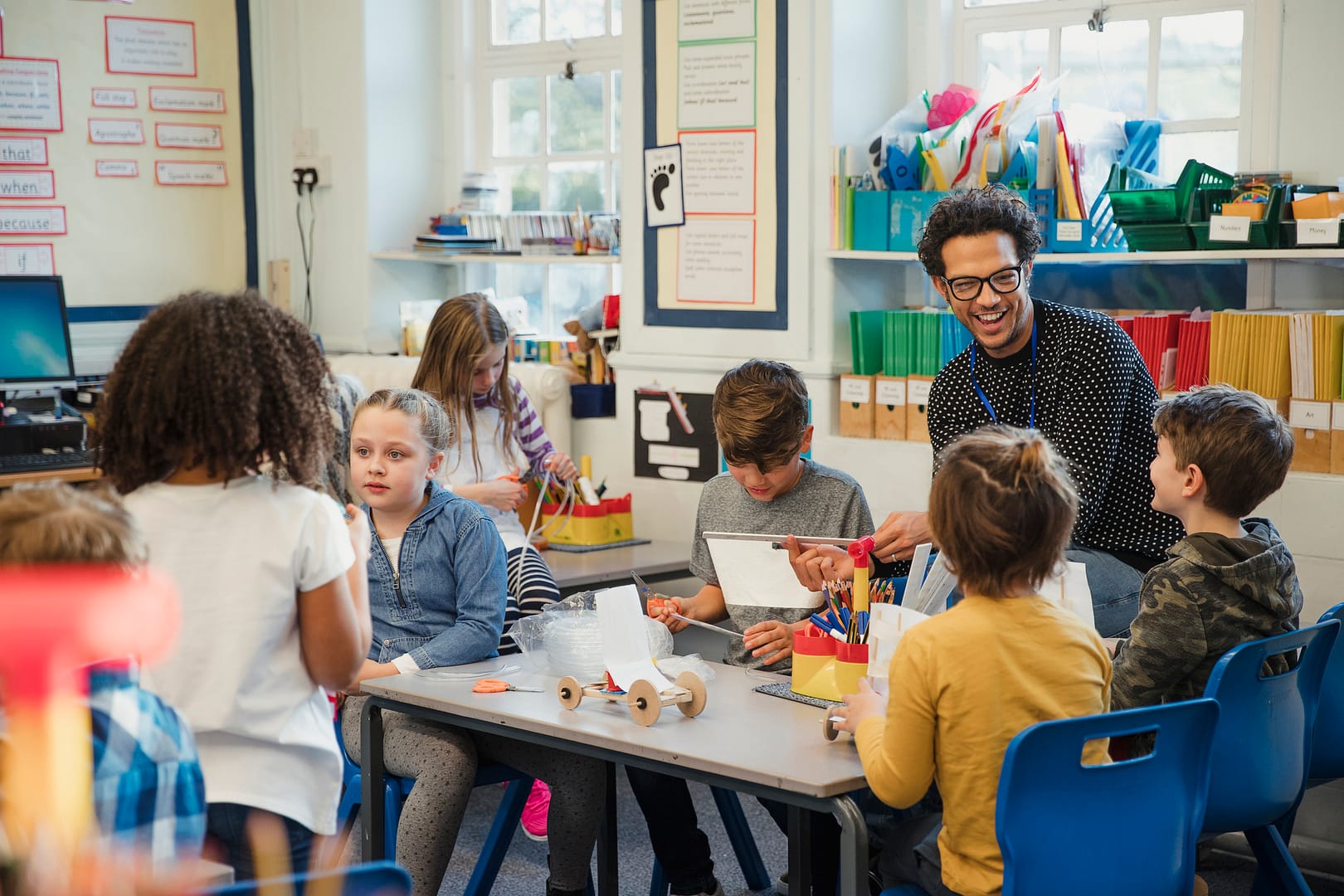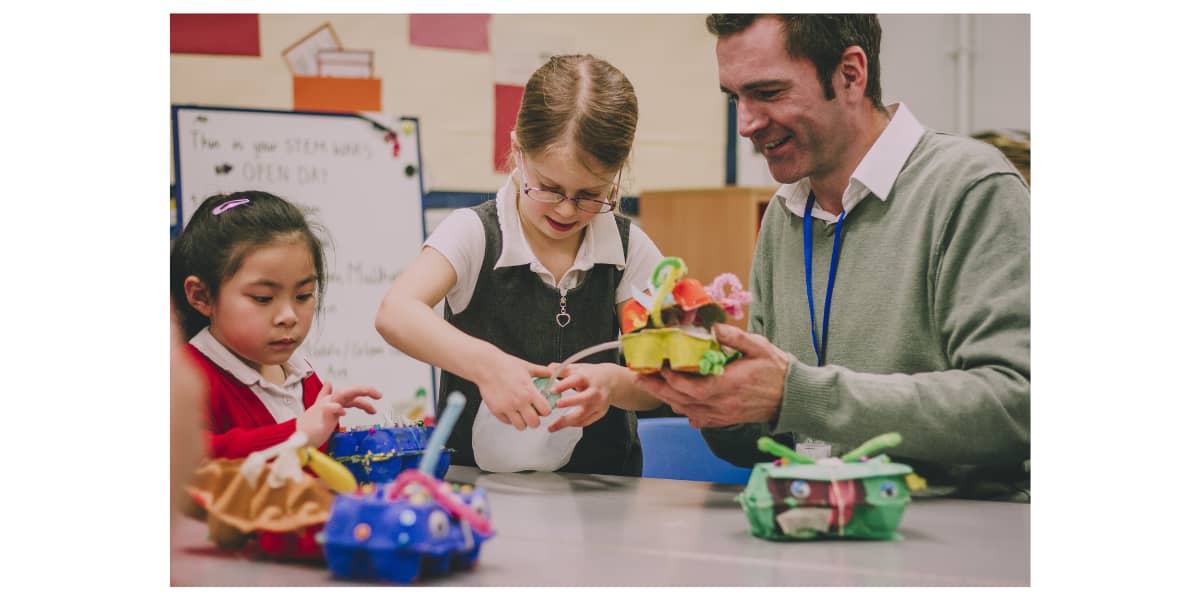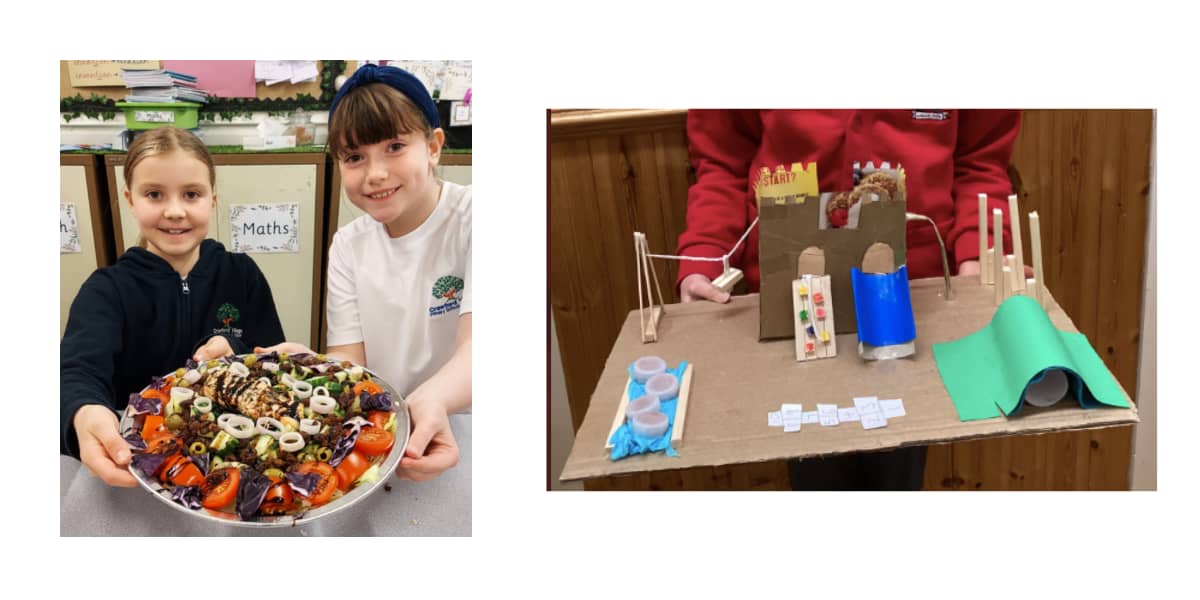How Primary Design & Technology Can Help Prepare Children For The Future
Written by Kapow Primary
Published on 28th April 2023
Last Updated: 9th July 2024
Written by Kapow Primary
Published on 28th April 2023
Last Updated: 9th July 2024

Find out how using the design process can help you prepare children in your school for KS3 and beyond! We look at how the design process is used in different industries, how it can be adapted for your class, and how Kapow Primary can help you to deliver future-proofed Design and technology lessons in the classroom.
It includes three main stages – Design, Make and Evaluate – which form a circular process until the product is considered finished.
This process is so fundamental across many industries we often take it for granted. For this reason, it forms the backbone of the national curriculum and best practices in design studios worldwide! Each part of the process can be understood as follows:
It is not just industry that uses this design process; all manner of creatives use it to produce something new, from writers and content creators to artists and chefs.
Even this short blog was designed for a purpose, written and then evaluated to ensure it met the needs of the audience. This is also something children will already be familiar with in class. Don’t we already teach them to consider their audience when they write? They then plan, write, edit and improve. Just like mini-designers.

Building around the design process automatically means aligning with the national curriculum and future-proofing the subject against any changes.
This is necessary because Design and technology is constantly changing. New technology brings new inventions and ways of working; any curriculum must keep pace with those changes. Although many technologies that the current cohort of primary-aged children will use in future are inconceivable now, it is possible to look at broad trends and see where we might be headed.
There are a number of critical macro considerations that are likely to impact design choices as we move forward:
New technologies developed in response to these trends will be conceived through the design process. By building your lessons around the design process and introducing considerations like these to your class, you are helping shape their understanding of the real-world applications of Design and technology.
The curriculum for Key Stage 1, lower Key Stage 2 and upper Key Stage 2 hasn’t altered for some time. However, Kapow Primary units are regularly reviewed to ensure the content is at the cutting edge of Design and technology thinking.
We use the strands Design, Make, Evaluate and Technical Knowledge to develop our units around six key areas of learning:
Using Kapow Primary ensures that learners have the opportunity to be creative, while embedding technical knowledge and understanding to build the expertise required for the next stage of their learning.
We want to see more primary school children develop a love of Design and technology! And intend to help them enjoy each stage of the design process, see its relevance and – perhaps most importantly – have fun!

Image credit: Crawford Village Primary School & St John CE Primary School in Sowerby Bridge!
The benefits of Design and technology should not be underestimated for all children in the class. SEND learners, in particular, benefit greatly from the variety of activities available throughout a Design and technology project. According to Ofsted, pupils with SEND often make better progress in Design and technology than in other subjects. This is for a number of reasons, which also apply to all children:
Skills can be developed that benefit children not just in Design and technology lessons but also in other subjects and outside the classroom. While skills from other lessons can also be drawn upon during Design and technology projects. For example, the application of maths skills to activities within Design and technology not only helps reinforce knowledge but also may remove barriers that some children have.
Finally, the Education Endowment Foundation’s report on Metacognition and Self-Regulated Learning suggests that, when put to good use, metacognitive strategies (thinking about learning) can equate to over seven months of additional progress.
The design process can be used as an explicit way to teach children about metacognition – to plan, monitor and evaluate their ideas – while keeping it accessible to all learners.
It is important that children can see where an interest in Design and technology could take them.
This can be achieved with the help of those who use the design process in work. Forging links with local companies will allow children to hear from people who have built careers in Design and technology, and could spark interest and help them to understand the real-life importance of the subject. Hopefully, this may lead to more children choosing Design and technology subjects at KS3!